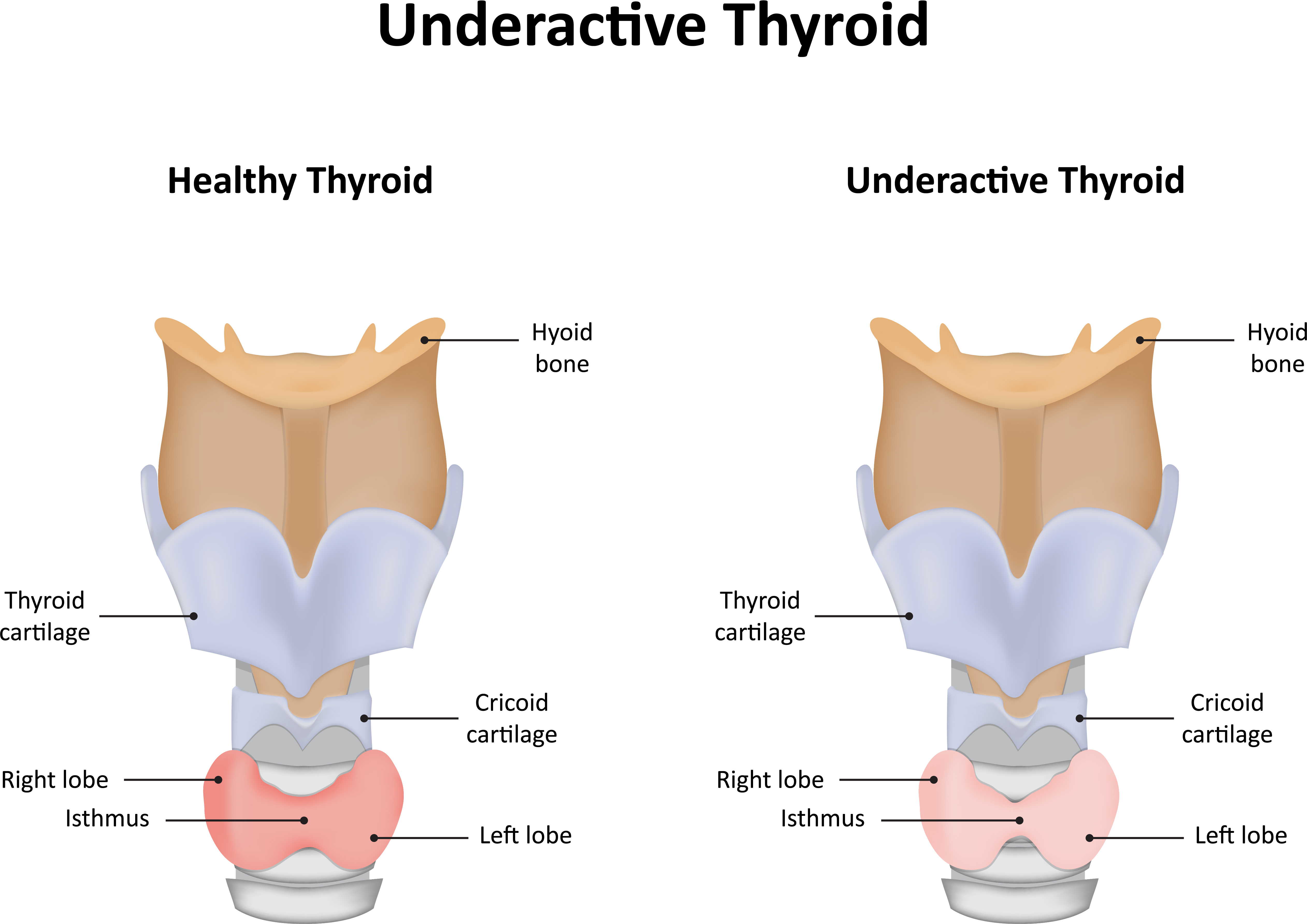An underactive thyroid is a relatively common issue, affecting 15 in every 1,000 women and one in 1,000 men in the UK. It can cause fatigue and weight gain.
The condition occurs when the amount of the hormone thyroxine, which regulates food metabolism, mood, and sexual function and is secreted by the thyroid gland, is not enough to meet the body’s needs. 
An underactive can be treated with synthetic thyroxine. Nutritionists also recommend looking at diet, as certain foods can interfere with thyroid function. In milder cases, it may be possible to bring the thyroid back into balance naturally through diet, supplements and rest.
Foods that interfere with thyroid function
Some foods which are otherwise healthy contain goitrogens, compounds that block the use of iodine which is required for the thyroid to work properly for normal metabolic function.
Although goitrogenic compounds are mostly deactivated when the foods are cooked, if you have underactive thyroid, it’s worth keeping a food diary to check to see whether certain foods containing goitrogens are affecting your wellbeing.
Goitrogen-rich foods include:
- Broccoli
- Kale
- Brussels sprouts
- Cabbage
- Cauliflower
- Swedes
- Turnips
- Collard Greens
Soy may also interfere with how the body produces thyroid hormones and should be eaten in moderation.
Many of these vegetables are beneficial for your overall health and shouldn’t be cut out completely, unless explicitly advised to do so by a medical professional.
It's only when these healthy foods are eaten in large amounts that thyroid function might be affected, and symptoms might be more severe.
What foods are good for hypothyroidism?
Eat iodine-rich foods, such as seafood, seaweed dairy, and eggs. Overall, people with hypothyroidism should aim to eat a diet based on vegetables, fruits, and lean meats. These are low in calories and very filling, which may help prevent weight gain.
What other factors affect an underactive thyroid?
It’s also a good idea to watch stress levels. Prolonged stress runs down the adrenal glands. These are the glands that produce adrenaline, the hormone we make in response to stress. This can often trigger a thyroid disorder, such as hypothyroidism, because the adrenal and thyroid glands are interlinked and work together. Trying to reduce stress levels and resting more helps balance the thyroid.
Symptoms of hypothyroidism
If your body is not producing enough thyroxine, your metabolism slows down and you may put on excess weight and experience other symptoms including tiredness, lack of energy and libido, cold hands and feet, poor concentration, depression, menstrual problems, low mood, dry skin and thinning hair (also from eyebrows) and brittle nails. There may also be pain, numbness and a tingling sensation in the hand and fingers (carpal tunnel syndrome).
How to find out of you have an underactive thyroid
Ask your GP for blood tests. The standard treatment is to take daily thyroxine tablets to alleviate symptoms. Bear in mind that blood tests for thyroid function can be unreliable. For example, you may fall within the ‘normal’ thyroid-stimulating hormone (TSH) levels range (0.6–10) and yet still exhibit symptoms. If this is the case, check out the complementary therapies below. Or you may turn out to be thyroxineresistant, which means your thyroxine levels are normal but your body isn’t utilising it properly. A thyroid scan can help to identify the underlying cause, such as an abnormality in the thyroid gland itself. If you have any concerns, ask to be referred to a specialist called an endocrinologist. For more information, contact Thyroid UK.
Read more
- How testosterone affects penalty shoot-outs
- How to deal with varicose veins
- Dealing with post-pandemic stress disorder









